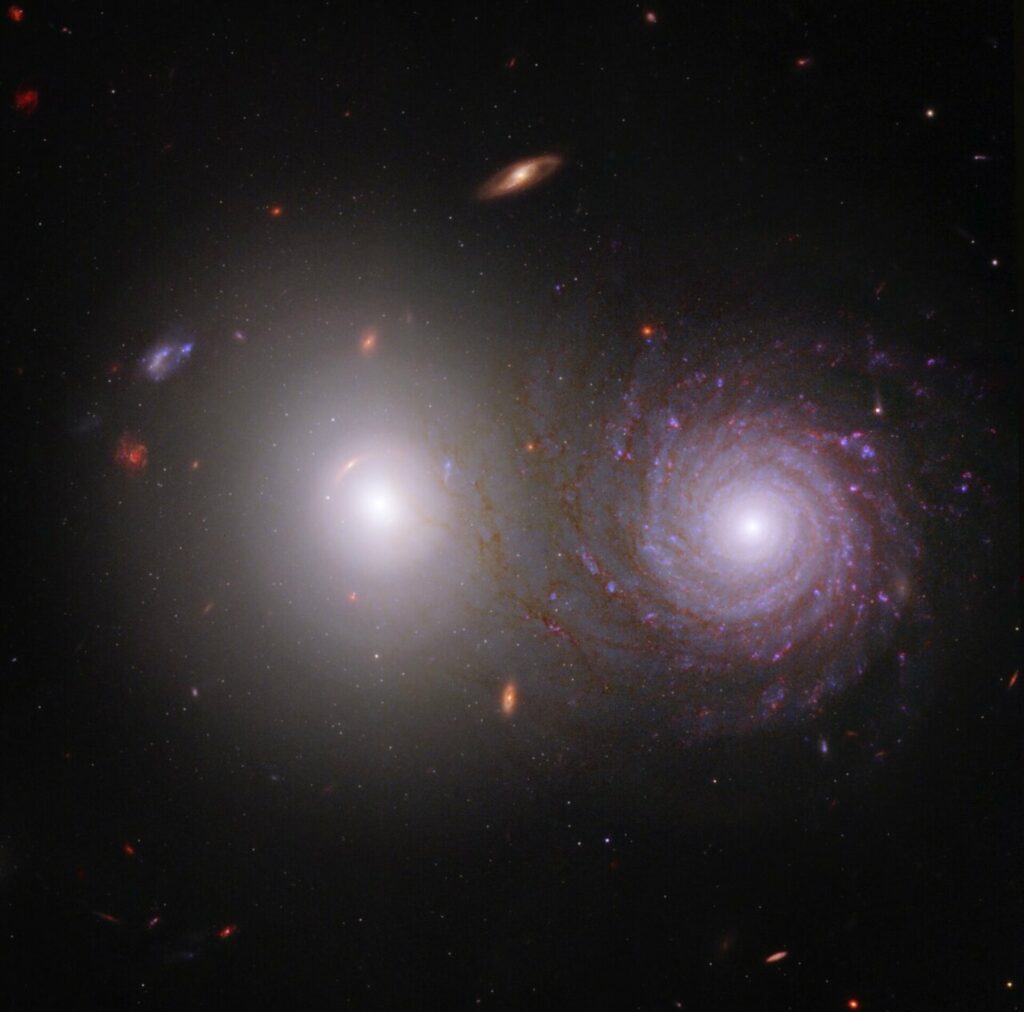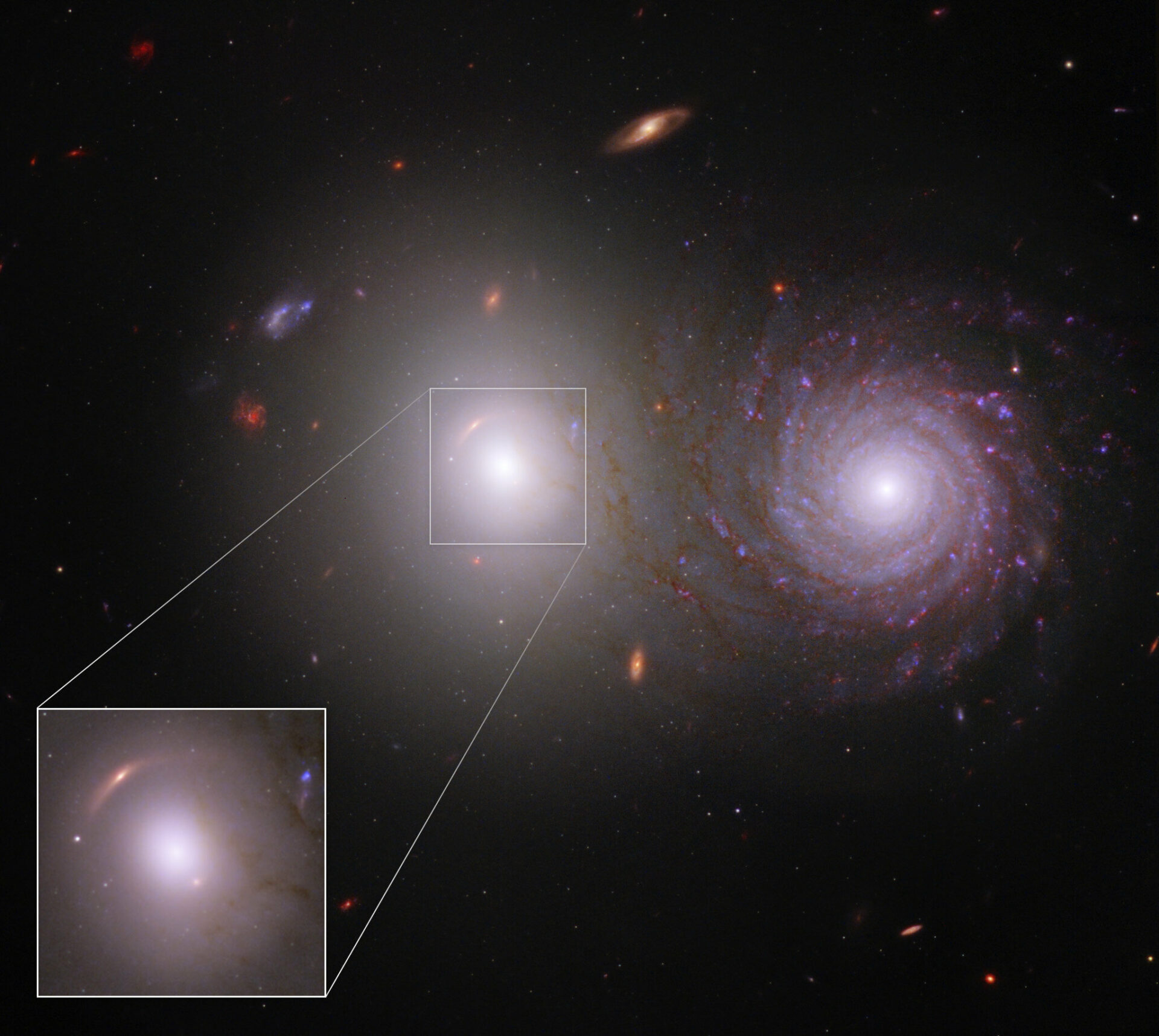The presented image is made up of images taken by the James Webb Telescope (JWST) in the infrared range and the Hubble Telescope in the visible and ultraviolet range. It shows a pair of galaxies known under the designation VV 191.

VV 191 consists of an elliptical and spiral galaxy. They are located at a relatively small (by astronomical standards) distance from each other, but they do not actively interact. Hubble and JWST photographed VV 191 as part of a project to study interstellar dust. Astronomers have used light from an elliptical galaxy to reveal dusty structures in a spiral galaxy.
The image obtained by two space telescopes shows the long, extremely dusty arms of a spiral galaxy. It seems that they intersect with the central bulge of an elliptical galaxy, although in fact this is not the case.
You can also see a number of interesting background objects in the image. For example, two distant spiral galaxies in the upper left corner. They have the same visible dimensions, but are painted in completely different colors. Apparently, this is due to the fact that one of the galaxies contains a lot of dust, and the other is located at a very large distance.

You can also pay attention to the red arc framing the top of the elliptical galaxy. This is a much more distant galaxy, which light was distorted by the gravity of VV 191. Curiously, this object is visible only on infrared images of JWST.
According to https://phys.org
Follow us on Twitter to get the most interesting space news in time
https://twitter.com/ust_magazine

